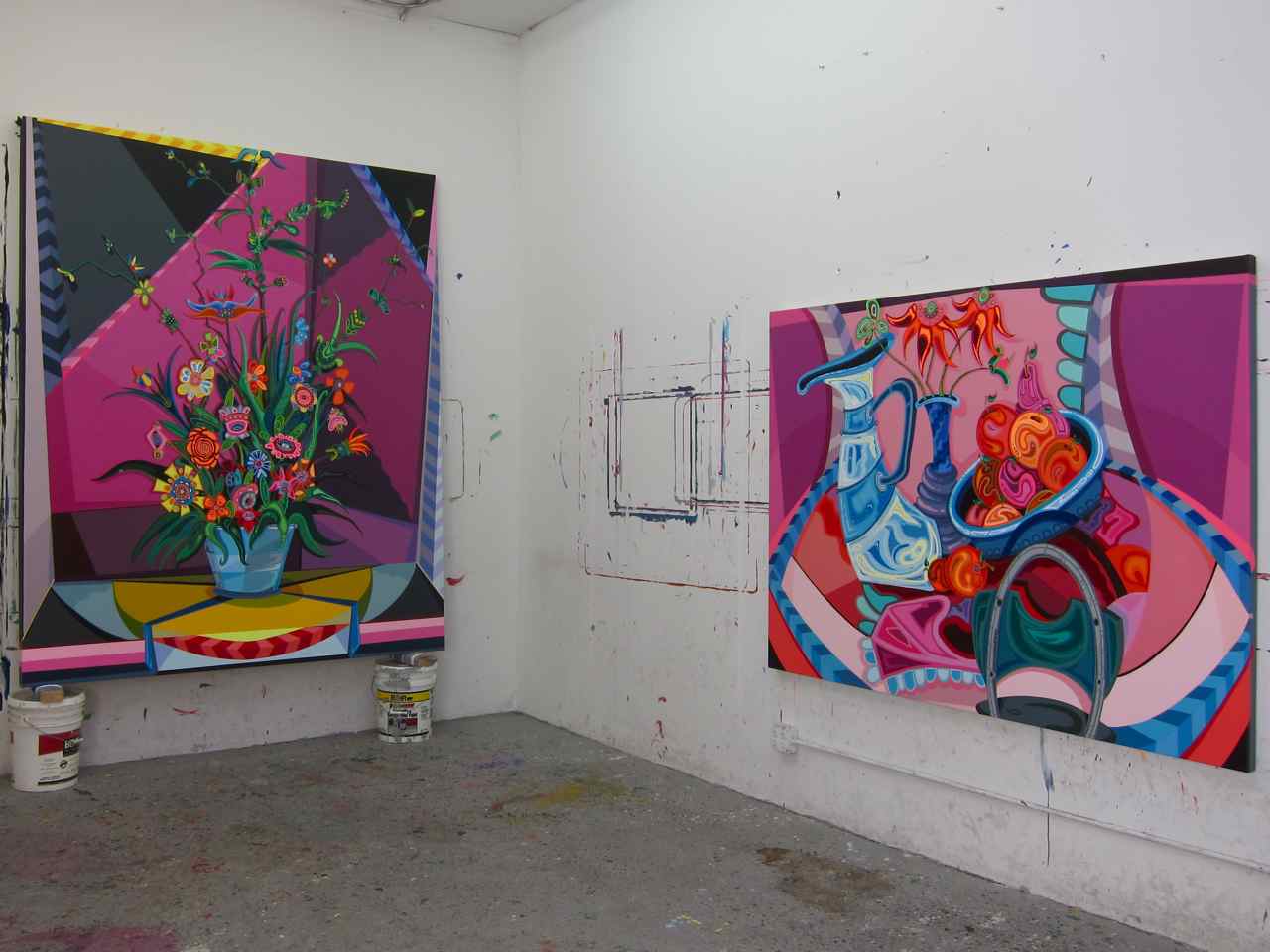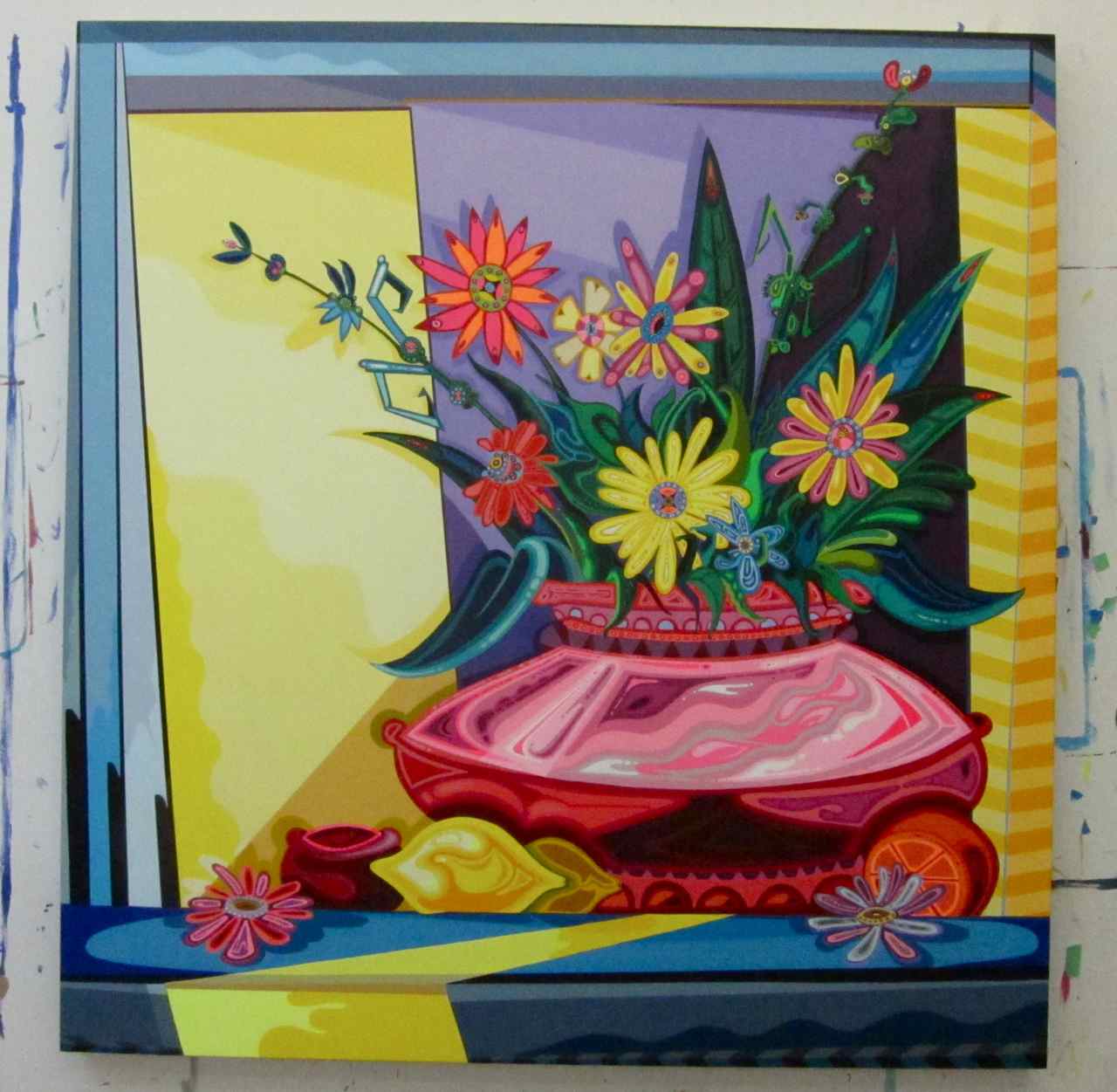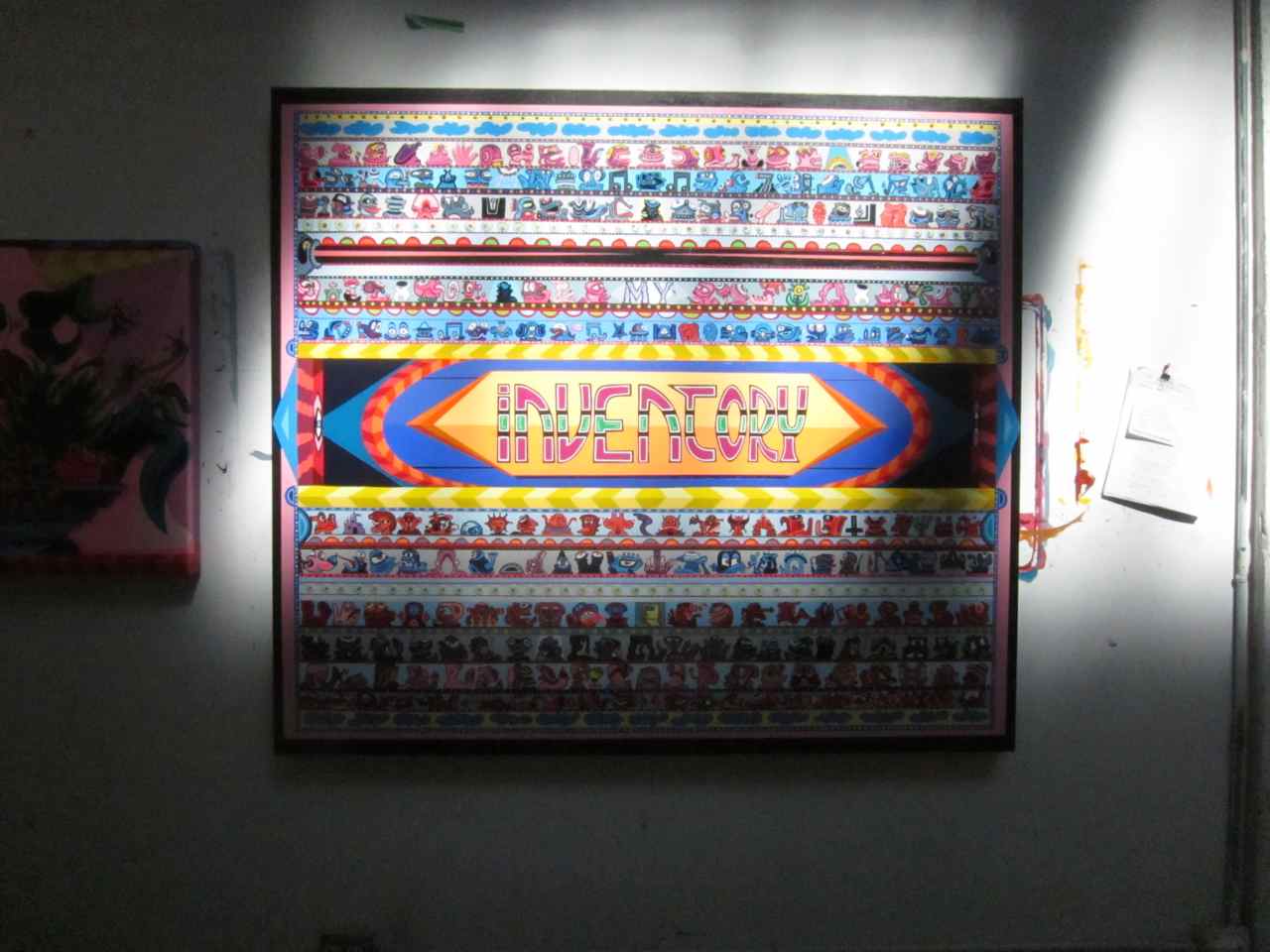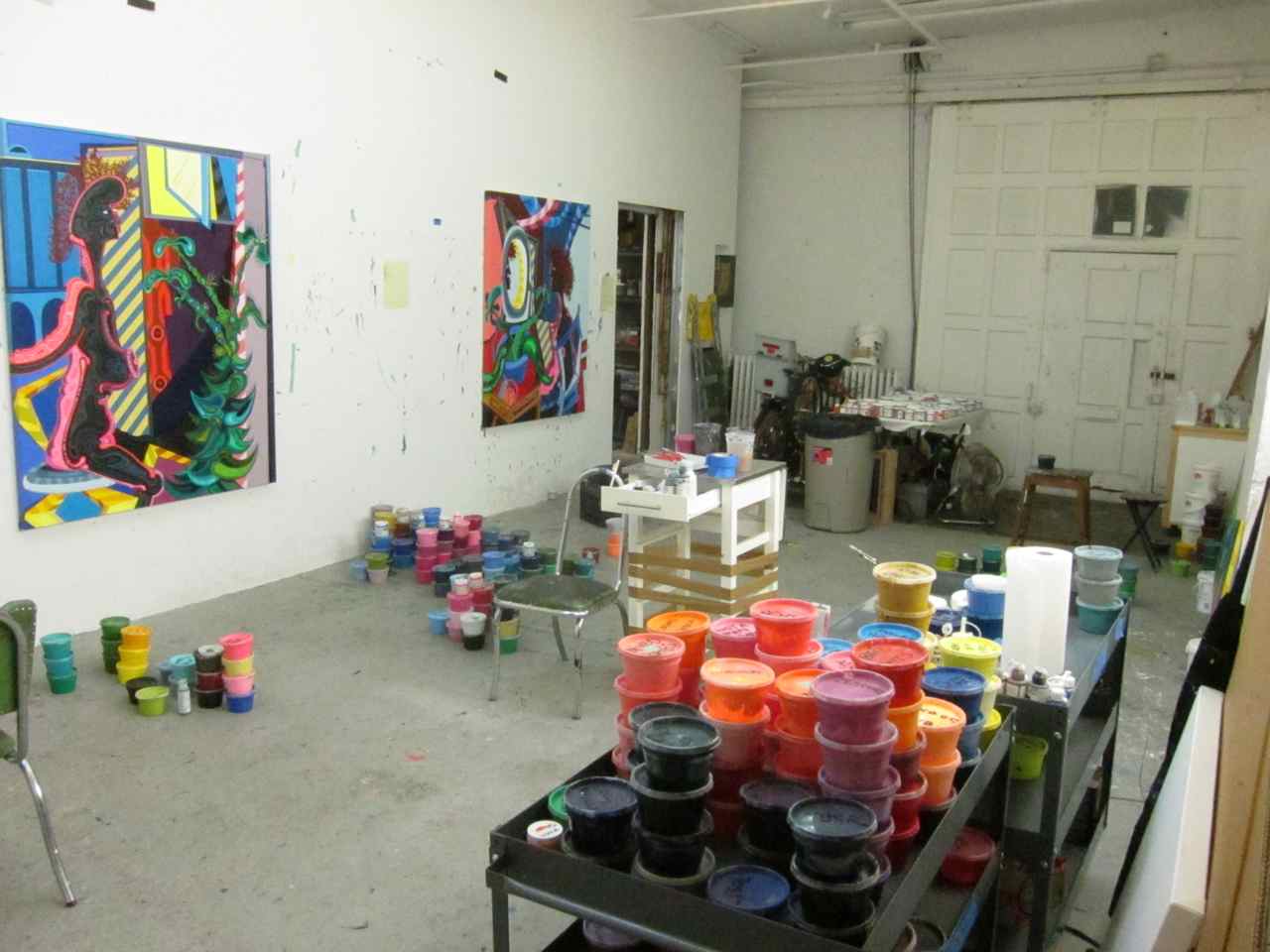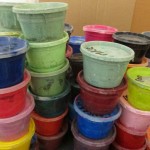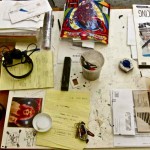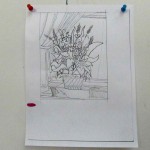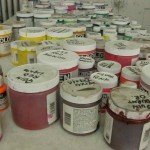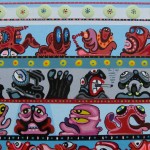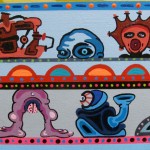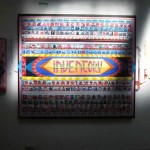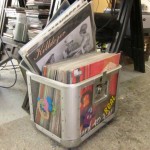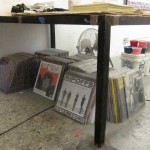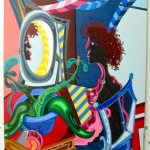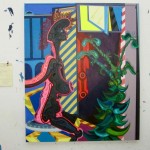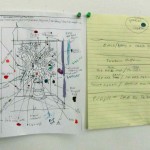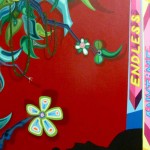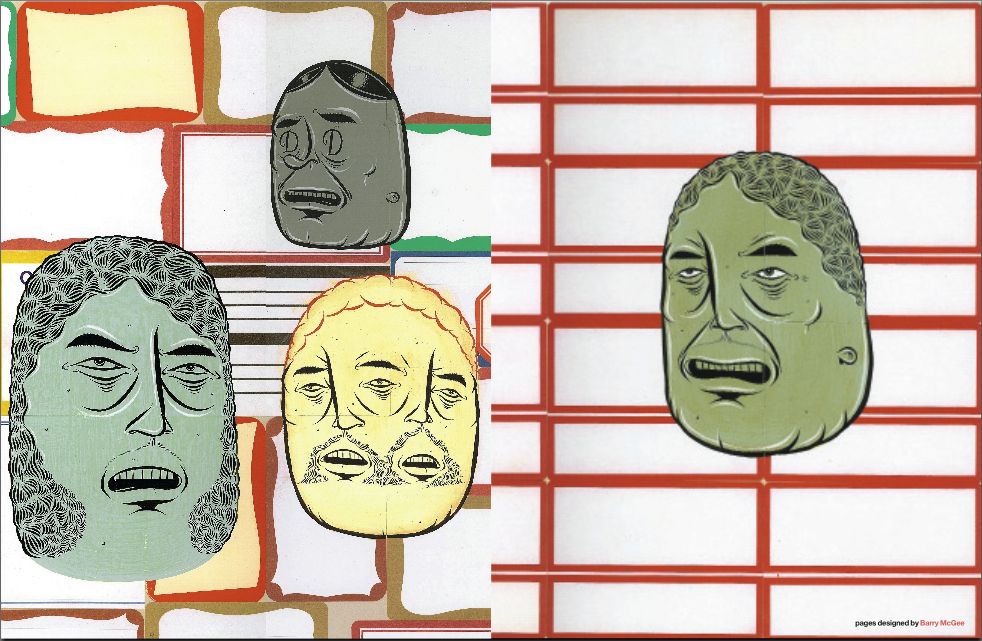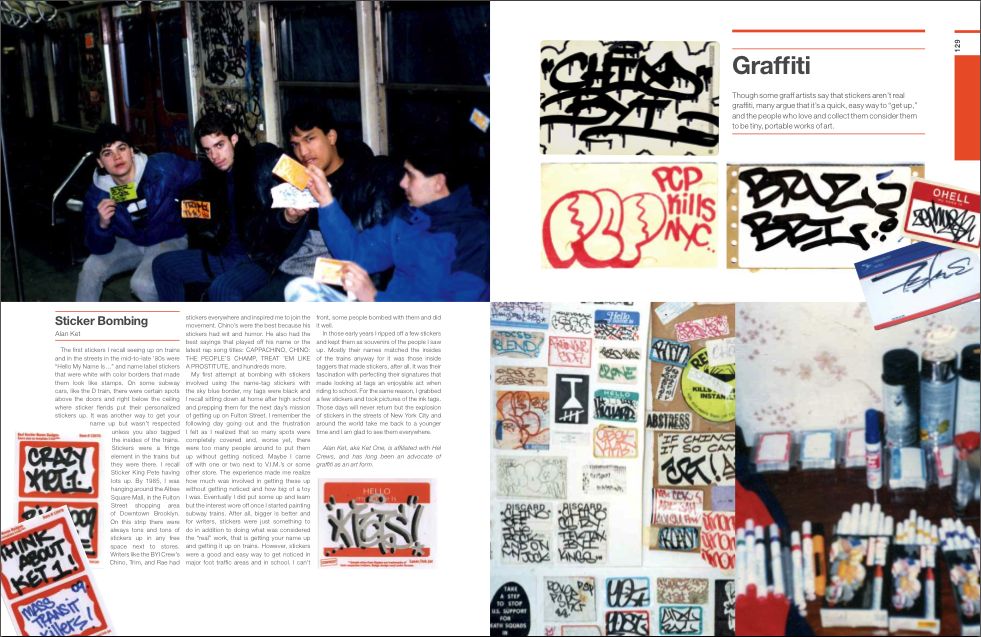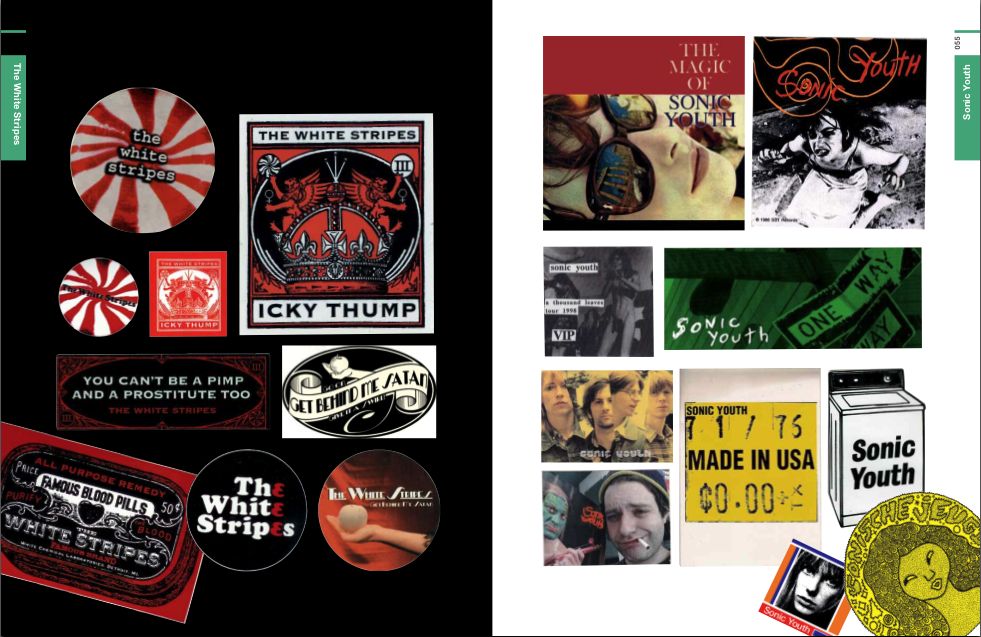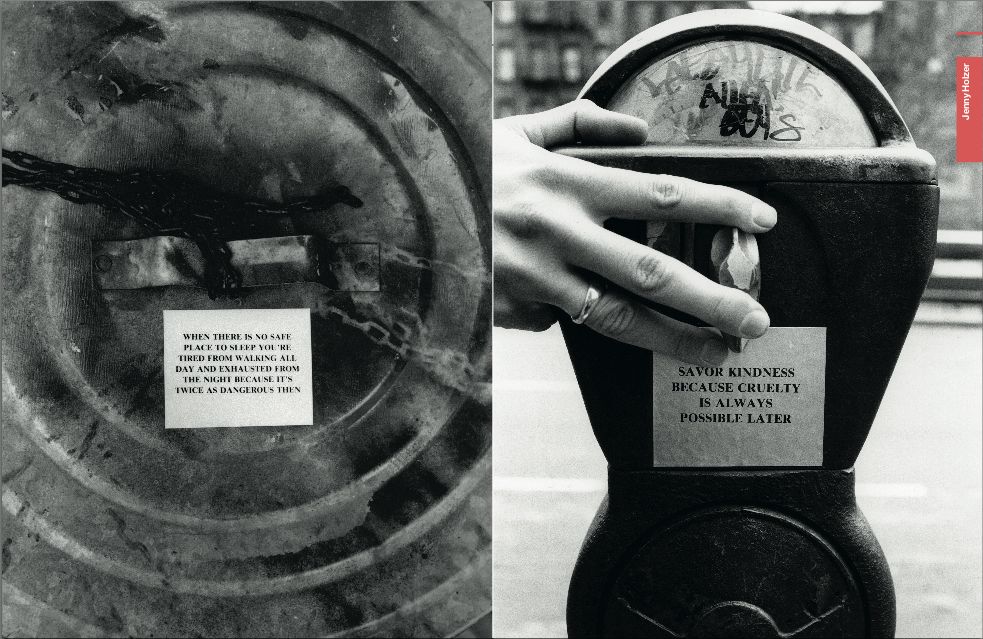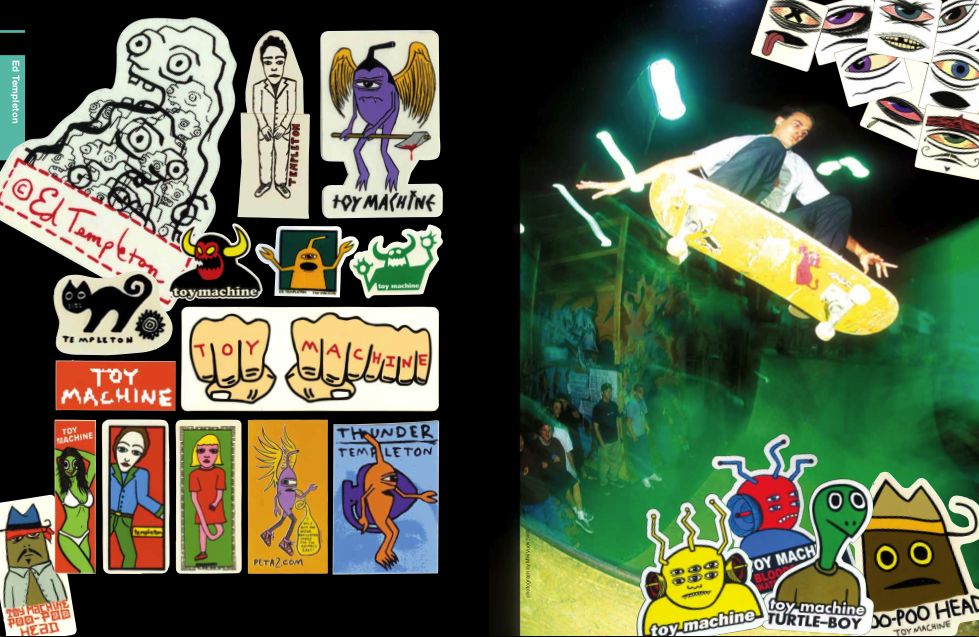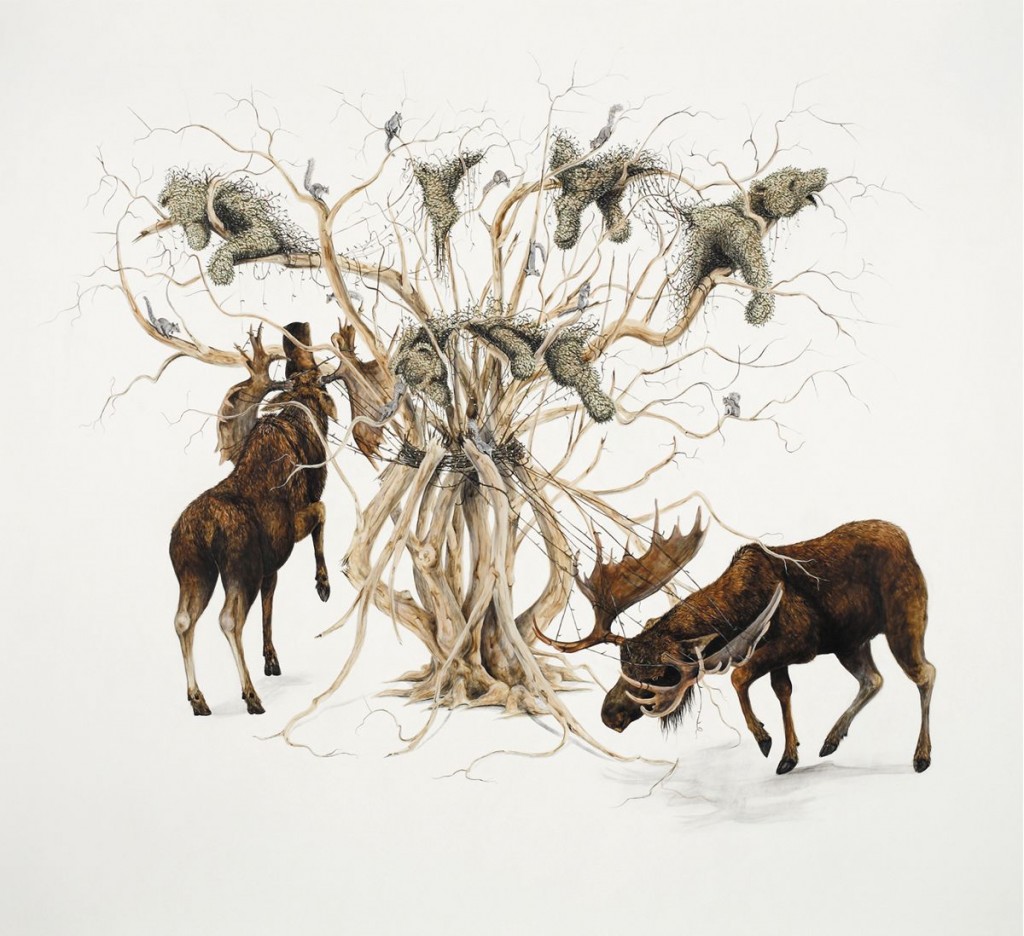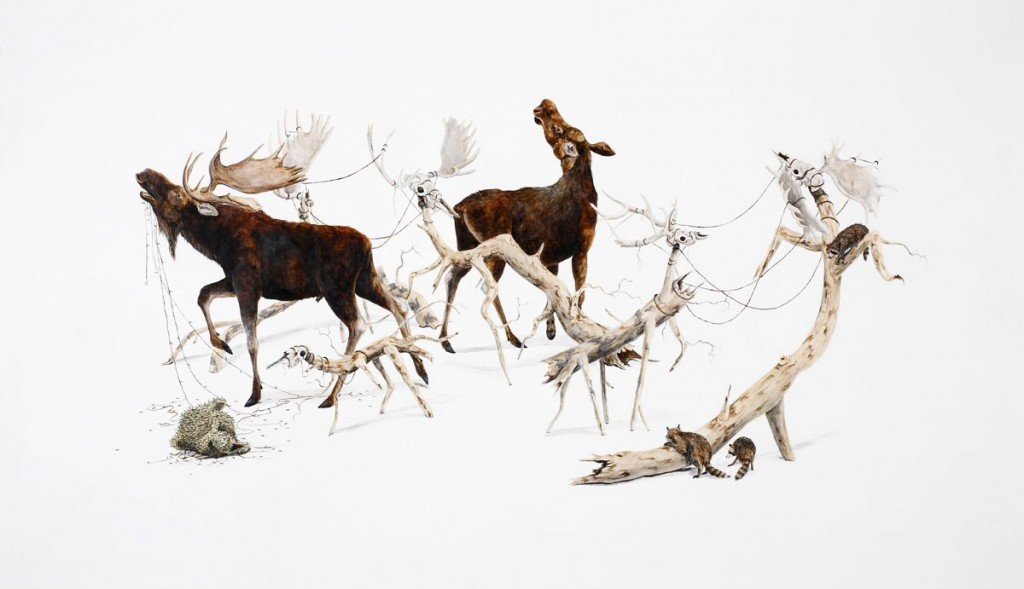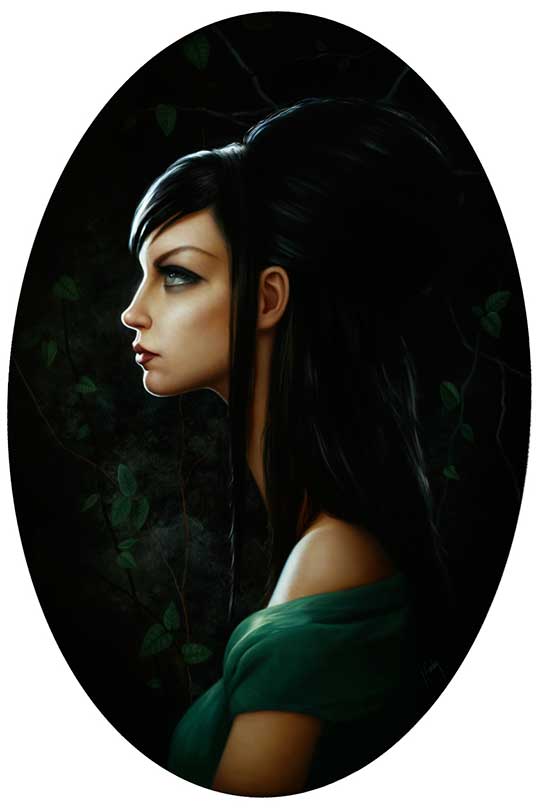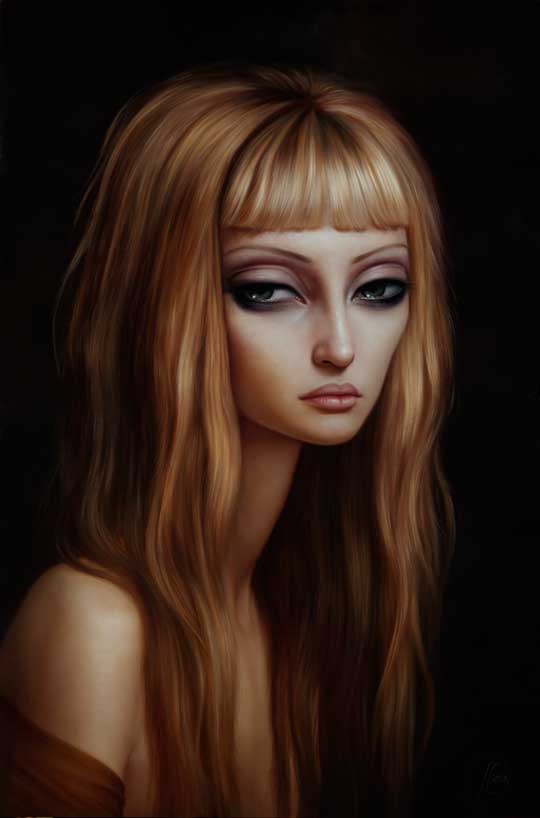Archive for the 'Interview' Category
Monday, November 1st, 2010
On the Move with a Still Life :: TAC Visits Erik Parker in the Studio
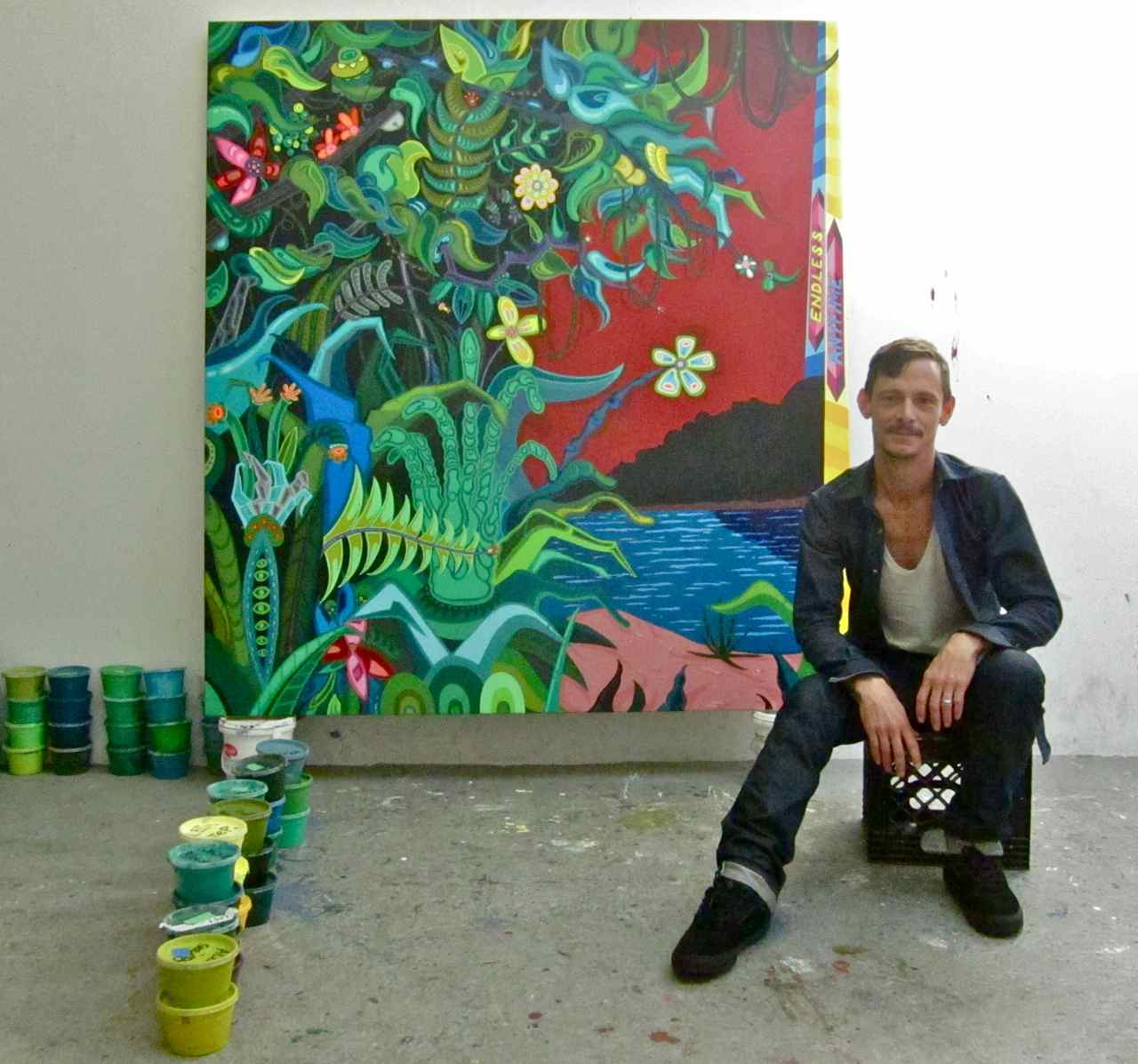
(All images and text © Jeff Newman/TheArtCollectors)
Life for Erik Parker is far from still. Last year the artist broke from the text and icon based glyph-like paintings that had guided him through successful solo shows in NY, Europe and Japan, unveiling new works with Paul Kasmin Gallery that were at once reminiscent of the dazzling colored psychedelia of Rick Griffin and portraiture somewhere between the twisted faces of Francis Bacon and the surreal-like heads of 16th century painter Giuseppe Arcimboldo. Now on the verge of his first museum exhibition, the Brooklyn based artist tackles yet another stylistic departure with a Los Angeles gallery show that is once again bound to surprise those familiar with his work. Earlier this month I paid Erik a visit in the studio to chat as he was putting the finishing touches on his newest paintings.
JN: Your upcoming exhibit reaches back to some of your work from several years ago, while also exploring new ground with still life paintings. Do you actively think about your next move professionally and where you are headed artistically, or take more of a Taosit approach and let the current take you where it may?
EP: That’s a good question! With the new body of work the idea was to make paintings that were “pretty” and speak not of the grotesque but the good looking shit in life, so I looked to the still life.
JN: Interesting. I was wondering if any of them were specific references to other know works, but I think you said mostly they were from random, unknown Google searches?
EP: Yea, I did get some of the images from Googling but I also looked to Rousseau and Braque.
JN: For me the still life paintings were a surprising departure in content, while unmistakably still your own. It made me think back to some painters who all tackled this motif at points in their careers. Lichtenstein and Leger were the first to come to mind. Were you thinking about this dialogue at all?
EP: For sure man, absolutely!
JN: Did you get a chance to check out that massive Lichtenstein still life show that Gagosian had this past year?
EP: That Lichtenstein show was mind blowing. I love how his still lifes are his style but really honest too. I think he wanted them to be pretty on his own terms and that’s where i am coming from too.
JN: With the majority of the show focused on new material, My Inventory is more reminiscent of your work on paper from a few years back.
EP: Word! My Inventory is the first of it’s kind on canvas. I just wanted to see if that type of work could be carried over onto canvas. It was sort of a personal challenge. That body of work and working that way is always fun and rigorous, so I do a few ever year and push them into diferent directions over a long period of time. The one on canvas had killer results. It became more graphic and illuminated in a post-pop kind of way.
JN: From the new paintings, it also struck me as the most personal piece.
EP: Right! But they are all a bit personal at the end of the day. There is no way out of that with me.
JN: Well, not to get too personal, but great record collection. It’s nice to see a fellow vinyl addict! What have you been listening to in the studio lately?
EP: Glad you asked man! I have been into heavy stuff for the last couple years. Off the top of my head, the Melvins, Sleep, Pissed Jeans, Hawkwind, Fela, Rolling Stones’ Sticky Fingers, Orange Goblin, Radio Moscow, Ghostface, and Children have been on a lot.
JN: So you grew up in San Antonio and went to college in Austin at the University of Texas, right? Were you in with the punk and indie scene down there?
EP: I think being Texan and being exposed to all that music and that kind of “fuck you, we’re from Texas” attitude had a big impact on me. That mixed with studying with Peter Saul definitely help me find my own voice as an artist.
JN: Right on! On that note, you’re about to have a bit of a homecoming with your first solo museum show. What’s the deal with that?
EP: I met the curator of the Modern Art Museum of Fort Worth through my gallerist Honor Fraser in L.A. and we hit it off right away. I’m stoked to being doing a show there!
Erik Parker – Endless Anytime runs through December 18 at Honor Fraser, Los Angeles. Focus: Erik Parker opens at The Modern Art Museum of Fort Worth on December 5 and runs through February 6, 2011.
(All images and text © Jeff Newman/TheArtCollectors)
Tuesday, October 5th, 2010
Peel Slowly and Read:: TAC Speaks with DB Burkeman about his new book
This week Rizzoli releases Stickers: Stuck Up Piece of Crap – From Punk Rock to Contemporary Art. The publication is a massive chronicling of the history of sticker culture, with more than 4,000 images and 30 contributing writers including Martha Cooper, Stanley Donwood, Shepard Fairey, Carlo McCormick, Clayton Patterson, Stephen Powers(ESPO) and Swoon. I got together with the book’s creator, my close friend DB Burkeman, to geek out about art, music, pop culture, and things to come.
JN: A lot of people know you from your pioneering contributions to Drum and Bass and involvement in the music world, but we first met down in Miami during Art Basel and hit it off geeking out over art together. I remember being excited to meet another musician who was finding himself more and more obsessed with contemporary art. When did you start paying attention to art. Was music your entry point?
DB: I was psyched to meet you too. You were my first real art geek friend! For me, music and visual art have always been totally connected. I even feel that they are really just different expressions of a similar process. As a nerdy kid I spent many hours lost in the gatefold sleeves of new albums by my favorite bands. It was as important to the ritual and enjoyment process as listening to the record. I think I actually wanted to be an artist, before I wanted to be a DJ, but not being able to draw for shit kind of hindered that option. I wanted to be a rock star too, but couldn’t play an instrument well either. So I went for taking pictures of rock stars instead. Then I heard a DJ that gave me an epiphany. When I was putting out mix-tapes and mix CD’s I always paid super attention to how they looked. I’m always shocked when someone puts out a great record that looks like poo. I really hated the creation and take over of the CD format. That real estate of the twelve-inch was reduced to a measly five-inch cover with nasty plastic. As for MP3’s, yeah, great for mobility, but no visual presence at all. I’m sure you and your readers are aware of the massive revival of vinyl. I was talking to someone from ADA (Alternative Distribution Alliance) last week and he said that pretty much every indie band releases their albums in a vinyl format now.
JN: Music was the catalyst for me too. High school was the first time I can recall wanting to find out about who the certain artists were behind art. I needed to know everything about a record – from the studio it was recorded in and who was at the mixing board, to who was behind the imagery. I really love the section in your book with old SST Records stickers from bands like Black Flag, Meat Puppets and Husker Du. Indie labels like that were definitely the first art I paid attention to. Sonic Youth was another big one for me. The records they did with artists like Raymond Pettibon, Richard Kern and Mike Mills became the first artists I started to follow and look in to.
DB: Well, I’m older than you. I wanted to know about who did Led Zep covers and go work for them. I actually applied for a job too. Hypgnosis wrote back and said I needed a university degree. Then I discovered Punk Rock. I think I forgot to tell you, but hanging out with you was what gave me the idea and then inspiration to try to get Sonic Youth in the book.
JN: No, You never told me that. That’s awesome! They recently put out a book and did an exhibition chronicling all their collaborations with visual artists.
DB: Do you know about Vinyl Factory in London? Its a art based record company that makes limited editions of big name artist records. You should see the Massive Attack one they produced – incredible!
JN: I think maybe we were looking at that shopping for records at Kim’s and started taking about the Designers Republic stuff too. Can you talk about the genesis of the book? I think when I met you two years ago it was in your head and you had already started contacting contributors.
DB: It started just over 3 years ago, simply as me trying to gather together all the stickers I’d collected from punk and then skate and street brands into a scrap book. A friend actually suggested that it might make an interesting book as a history of stickers. I did a bit of research and found there were loads of sticker books in the market, mostly graf and street art ones, but nothing that came at the subject from a historic, timeline perspective.
JN: One of the things that interested me about this book is that even though it’s represented, this is not really about graffiti, but functions more as visual history of how stickers have existed and evolved over time within different segments of the pop culture landscape, including music, fashion, the street.
DB: I think the graf and street art angle was why the publishers were all hungry for it, but its definitely not a graffiti book. Anyway, by the time I’d met you I was in way over my head. I had collected thousands of stickers and people from all walks of life offering more, but I had no publisher no designer to actually turn it into a book. I ended up meeting the designer Monica LoCascio via Gary Pini and together we created a few mock pages to send to publishers.
JN: Was it hard approaching potential contributors, especially some of the more notable ones without having a publisher? I imagine some bigger entities or names may have only want to be involved if there was a well known publisher and good distro on the table, and have shied away from doing something smaller or more DIY. How did you tackle that and not come off like, “Hey, I’m making this really great book and I don’t have a publisher and can’t tell you who will put it out, but you should be in it anyway!”
DB: Some people were amazing, I think Radiohead’s visual artist and designer Stanley Donwood wrote back and said he was down to contribute text before I had Rizzoli on board. ESPO and Banksy too. It really took off once I had a prestigious publisher’s name though.
JN: How did Rizzoli get involved?
DB: It sounds crazy, but I simply found the name of an editor. Actually Ryan McGinness kindly gave it to me and I pitched the idea of the book to them. Turned out my now editor at Rizzoli actually had a tag sticker of her own and the book idea instantly connected with her on a personal level. It’s really nuts, because out of the five top publishers I wrote to, four of them came back and made offers.
JN: I’m sure having so much of the leg-work done with contributors already on board, content sorted and legally cleared helped seal the a deal.
DB: I think it helped for sure. The main challenge for me was keeping track of who had given what to me and making sure they were credited. I think my favorite two pages in the book are 289 and 299. They have no stickers them, just a list of 1300 credits! We worked for three months on those two pages. I actually have real nightmares about people coming after me pissed off that I spelled their name wrong or missed the page they are on. There are still hundreds of stickers that are not credited yet. We have a email address, whomadethatsticker@gmail.com, for people to write to so the next printing of the book can be updated.
JN: So you still don’t know who the artists are behind some of the images, but what about the stuff you did know? Was getting the rights to anything a hassle or cause any roadblocks? I know there was that headache with Live Nation and Sex Pistol, right?
DB: Most the real problems with permissions were from companies that owned the rights, not the original artists. The Pistols held a very special place in my heart. I came of age at the exact moment of their creative output. Sadly my feelings have considerably changed towards them. I spent a frustrating year and three months trying to get permission to simply show a few of their stickers. Live Nation owns their rights now. They wanted to know how much I would pay. I really wanted to put together a page that said “Sex Pistols stickers: permission denied by Live Nation,” but Rizzoli shot that down since they are working on the idea of a Pistols’ book. Eventually they were able to clear it for me but only with the stipulation that Jamie Reid was not credited as the artist. Nice people Live Nation are, huh? Since then I’ve noticed a massive flood of Jamie Reid’s images on all manner of cheesy products.
JN: Yea, Live Nation are behind the recent PiL reunion too. Lydon’s in deep! So, looking back, where do you see the earliest seeds of a sticker culture?
DB: It’s really hard to define where and when the culture started. The first sort of craze in America was called Decal-Mania, but travelers in the 1920s would put country or city stickers on their luggage trunks to show off where they had been. Clayton Paterson’s partner, Elsa Rensaa told me this great story about how in the French Revolution the streets of Paris had wheatpastes of Mary Antoinette being fucked by pigs. Rizzoli are such sticklers for fact checking, so I couldn’t include it in my introduction since we could not find exact documentation of it. Carlo McCormick wrote an incredible academic history piece for the one of the three introductory essays in the book.
JN: One of the most interesting aspects of street sticker culture is the riffing and remixing of designs. A well known example is how many people out there have taken Shepard Fairey’s early Andre Has a Posse sticker. And he himself, along with countless others – the Supreme logo for example – have used Barbara Kruger’s red and white block lettering style. You’ve also been a part of this. You’ve referenced both Kruger and Fairey in some of your own stickers. What would you say to those who see this as nothing more than lazy design theft?
DB: Interesting question. I never thought of it as theft. The thing I love most about stickers it is how they show that a simple graphic or design can get into the sub-conscience of society and become part of the visual zeitgeist for the next ten or twenty years. I’ve been a fan of “culture jamming” since I first discovered it in the early 80s via Rick Klotz and his streetwear brand Fresh Jive. Stussy also flipped Channel’s logo with the double S’s instead of C’s. As a club and rave promoter in the early 90s I did my own logo jamming stickers, very influenced by Klotz. But really, it all comes back to the Pop artists of the 60’s like Warhol and Rosenquest with products.
JN: Yeah I don’t look at it that way either – to me its probably the most compelling thing about the culture. There is an ongoing dialogue and acceptable language of appropriation that keeps evolving. What about people who search the streets, remove and collect them. Martha Cooper, for example, recently published her second book of stickers from her personal collection. I know there has been some criticism against people who remove them from their intended home on the street. Where do you weigh in on the debate?
DB: Martha’s essay in our book is titled “Confessions of a sticker thief. ” Call me nieve, but I never considered it stealing. I think of it as collecting them to show them to a wider audience. If I didn’t take it to preserve it, someone else would, or it would get buffed off by the city, or the weather would destroy it. So far no artist has contacted us and said they don’t want to be in the book or in the gallery shows we’re working on. Plus we are offering to give back any of the stickers to the artists that did not donate them. It’s the same email as I mentioned before, whomadethatsticker@gmail.com.
JN: Sounds like you’ve been pretty supported by the community. Any haters?
DB: Only one hater so far. Generally people seem to be going nuts & saying stuff like “It’s the fucking bible of Stickers!” Monica and I worked so hard on this and it’s so amazing to finally see the 30 writing contributors and the 1300 artists that we know of be impressed and pleased. So far the biggest kick I’ve gotten was sitting at Tony Goldman’s desk watching him spend 30 minutes scanning the book and finally saying, “this is an important contribution to art.” Monica and I were walking around in a pink cloud for the rest of the day. Till the next crisis came up.
JN: Nice! He’s gotten fairly involved in in supporting street art. There was the Deitch sponsored Wynwood Walls project he provided space for during Basel Miami and he’s been lending the Houston Street wall in New York out for a couple of years now. Actually, I think every artist that has been on that wall is represented in Stuck Up – Haring, Os Gemeos, Shepard, and now McGee, right?
DB: Sadly I could not get Os Gemeos stickers in time for book, but they will be in the exhibition. I don’t want to say too much about why we were talking to Mr. Goldman for fear of jinxing it, but watch this space!
JN: Got it! So what’s up with the exhibition?
DB: We’re working on finding the right partner and sponsor to help us turn the book into a museum quality exhibition. Not just a bunch of stickers on the walls, but a massive project. The plan is to do New York in March, Chicago in July, L.A. in September, and Miami for Basil in December 2011. Lots of really exciting stuff in the works, but I need to get some sleep first….
Stickers: From Punk Rock to Contemporary Art is out now via Rizzoli in paperback or as a limited, numbered hardcover deluxe boxed edition, including a folder pack of 23 exclusive die-cut stickers, many signed by the artists. Contributors include Kenny Scharf, Barry McGee, Ryan McGinness, Jose Parla, Mark Dean Veca, Rostarr, and Space Invader.
DB can be heard on his eclectic by-weekly mix-tape style radio show, BLURRINGradio at http://urls.artonair.org/blurringradio (shows are achieved down the page).
(All text © Jeff Newman)
Thursday, July 15th, 2010
Interview :: TAC Talks with Curator Mónica Ramírez-Montagut about KAWS

(All Images: Jeff Newman/TheArtCollectors, except where noted)
Despite years of circumventing mainstream art circles and rarely showing his work publicly, KAWS has built up a massively dedicated following of collectors who obsessively seek out his creations, from limited edition toys and clothing, to even more elusive original paintings and drawings. After eight years of absence in the U.S and five years since exhibiting internationally, 2008 marked the artists’ return to gallery walls. With three consecutive solo shows in Miami, New York and Los Angeles, KAWS unveiled entirely new bodies of work that signaled a young artist on the verge of his most productive phase to date.
His most recent display is is no exception to this trajectory. On June 27th, the Aldrich Contemporary Art Museum, Connecticut, opened the doors to KAWS’ first solo museum exhibition, providing a retrospective look at his graffiti roots, fine art, and commercial projects, as well as brand new sculptural and installation pieces that stand as his largest and most ambitious to date.
TheArtCollectors spoke with curator Mónica Ramírez-Montagut about the process of creating the landmark exhibition. Read on for the conversation, click images for larger views.
Sunday, July 11th, 2010
Saatchi to Gift Gallery and Millions in Art to England

Tracy Emin’s My Bed (1998), one of the 200 works of art Charles Saatchi plans on gifting to the British government.
Outspoken advertising and art collecting tycoon Charles Saatchi has announced plans to gift his London gallery and some 200 works of art to the British government upon his retirement. While terms of the donation have not yet been ironed out and Saatchi has not specified a retirement date, the deal would put an estimated $37.5 million worth of art, along with Saatchi’s 70,000 sq ft exhibit space (to be renamed The Museum of Contemporary Art, London) in the nation’s hands. Statements from the gallery clarified that no charges would fall on the nation’s taxpayers, nor would Mr. Saatchi himself receive any tax benefits from the gift.
While the works to be donated may serve as hefty building blocks for a new museum, ultimately its success as a major public art institution will rest on what government agencies are given the task, who is brought in to curate and direct, how new works will be acquired by the collection, and in doing so, what will be purged.
More at the NYTimes and Guardian
Wednesday, February 10th, 2010
Jeff Koons and David Byrne: 77
Here we see a young Jeff Koons in candid conversation with musician, David Byrne. The chat took place at 52 Bond Street, widely known for housing many artists during the 70s, and located just across the street from CBGB, where Byrne’s band, The Talking Heads grew their early following. While the video title suggests the talk took place in 1975, references to Jimmy Carter’s upcoming presidency and celebrating New Year’s at a NY strip club indicates it most likely occurred in early January of 1977, just two months after The Talking Heads signed with Sire Records. Their first album, Talking Heads: 77, was released in September of that year.
In more timely news, on April 10 Byrne and Fatboy Slim will release Here Lies Love, their collaborative concept record about first lady of the Phillippines, Imelda Marcos. Listen to Please Don’t, the first single, here (via Stereogum)
Wednesday, October 28th, 2009
Last Chance: Andrew & Peter Sutherland
Supreme Management Being has posted an interview with Andrew and Peter Sutherland, whose current show Amateur Hour at ATM (New York) closes this weekend. Check out a slideshow of the exhibit on Peter’s blog here.
Tuesday, October 13th, 2009
Interview :: Ryan McLennan
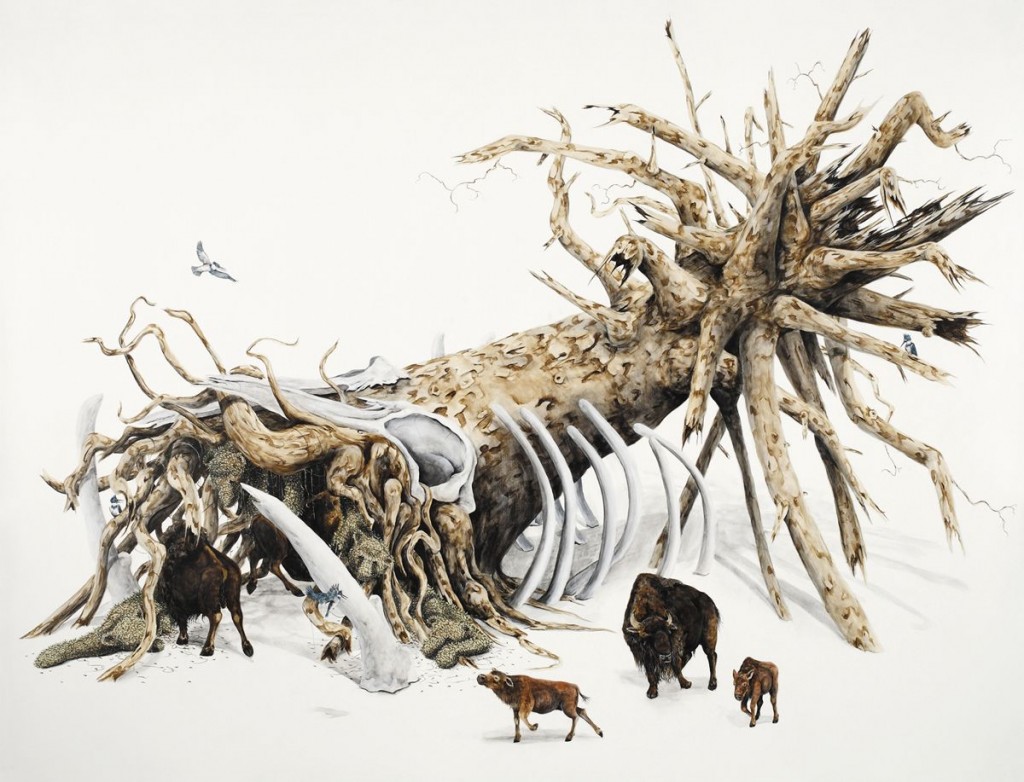
(All Images © Ryan McLennan via Joshua Liner Gallery)
Virginia based artist Ryan McLennan has created a dense visual parable for our own existence, where animals, much like we humans, shape their surrounding world while engaged in the struggle to survive and coexist. McLennan opens a solo show of recent works this weekend, at New York’s Joshua Liner Gallery. We had time to ask Ryan a few questions before packing up his new paintings and heading to the city. Make sure to click images for larger views.
TAC: The title of your upcoming show is “The Strain of Inheritance.” Can you talk a bit more about this?
RM: Basically it is the struggle for survival and trying to build upon what little there is to begin with. Who exactly these animals have inherited their world from is not important, but they have it and what they are doing with it and themselves is the focus.
TAC: How crucial is it for you to create images that contain a political, social, or environmental message? Is this the starting point for you when planning a piece or body of work?
RM: The environmental message built the landscape for my paintings so it remains prevalent, though not always at the top of my thoughts. Political and social issues come through in the narrative, but again not a focus. I think those messages seep in through the subconscious, as I don’t consider myself an overly political person, definitely not a political artist. I am telling a story, creating a world that in many ways reflects our own. The animals in this world deal with issues just as we do. They have social relationships, varying religious beliefs, love and family, opposing political views, crime, work, and so on.
TAC: What can you share about your creative process and the research that goes into your pieces? – Has it changed or evolved at all with the latest work?
RM: When I started making these paintings, I was concerned with factual information and researching the behavior of the animals. This is still important, but lately I have found interest in fantastic and absurd scenarios. Using what I have read in mythology and legend to create landscapes and taking influence from portrait photography to individualize the animals, giving them roles in society. These sources have pushed my work in a different direction. I feel like these paintings have evolved into stills from a fantasy movie.
TAC: There seem to be conflicting messages of both hope and despair, violence and peace in your paintings – as if new life is being sustained by the death and destruction of previous life. What are your thoughts on this?
RM: The life and death cycle is very important in my work as well as in nature. I recently spent some time in Yellowstone National Park, which is crawling with wildlife. For all the elk and bison I saw I also came across plenty of skeletons and antlers. Those remains help in sustaining the ecosystem there. I use this in my paintings, but I push it a little further. The environment in my paintings is so barren that anything existing there must be considered for sustenance, shelter, or as something sacred. I lean a little more to the despair and struggle, which brings us back to the show title, but there is still a feeling of hope…with a little humor, at least funny to me.
TAC: So, you’re packing up and heading to NY for the show – anything you are looking forward to in the city?
RM: I’m really looking forward to seeing my NY friends. My family, Boston, Richmond and Philly friends all coming together. Simen Johan at Yossi Milo Gallery and some other shows I want to see around Chelsea. Museums. Bookstores. Restaurants. Just being in NY and not in Richmond. I try to visit enough to not have to live there.
Ryan McLennan – The Strain of Inheritance
Oct. 17 – Nov. 14
Joshua Liner Gallery
548 W. 28th Street
NY, NY 10001
info@joshualinergallery.com
Tuesday, October 13th, 2009
Lori Early at Opera Gallery, London
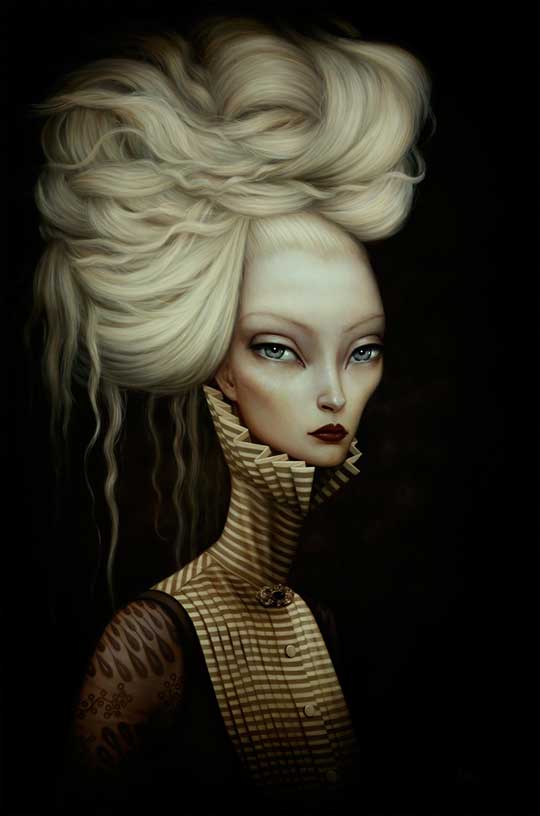
(All Images: © Lori Early via Curated Mag)
Lori Early opens Laments and Lullabies this Friday, Oct. 16, at Opera Gallery’s London location. The event marks her first solo show since exhibiting at Jonathan LeVine in the winter of 2008. Check out Curated Mag’s new interview with the New York based painter.
Lori Early – Laments and Lullabies
Oct. 16 – Nov. 14
Opera Gallery London
134 New Bond Street,
London, W1 2TF
london@operagallery.com
Wednesday, October 7th, 2009
Art:21 Season 5 Premieres Tonight

Season 5 of Art:21 – Art in the 21st Century premiers tonight, at 10pm EST on PBS. The first episode features William Kentridge, Doris Salcedo, and Carrie Mae Weems. Future episodes will include Jeff Koons, Paul McCarthy, John Baldessari, and Cindy Sherman. For now enjoy this preview from the season opener or watch previous episodes here
Tuesday, September 1st, 2009
Ed Templeton Interview

Image: Toy Machine
Juxtapoz has posted a two-part interview with Ed Templeton, conducted by fellow artist, Kelly D. Williams. Read: Part 1, Part 2
